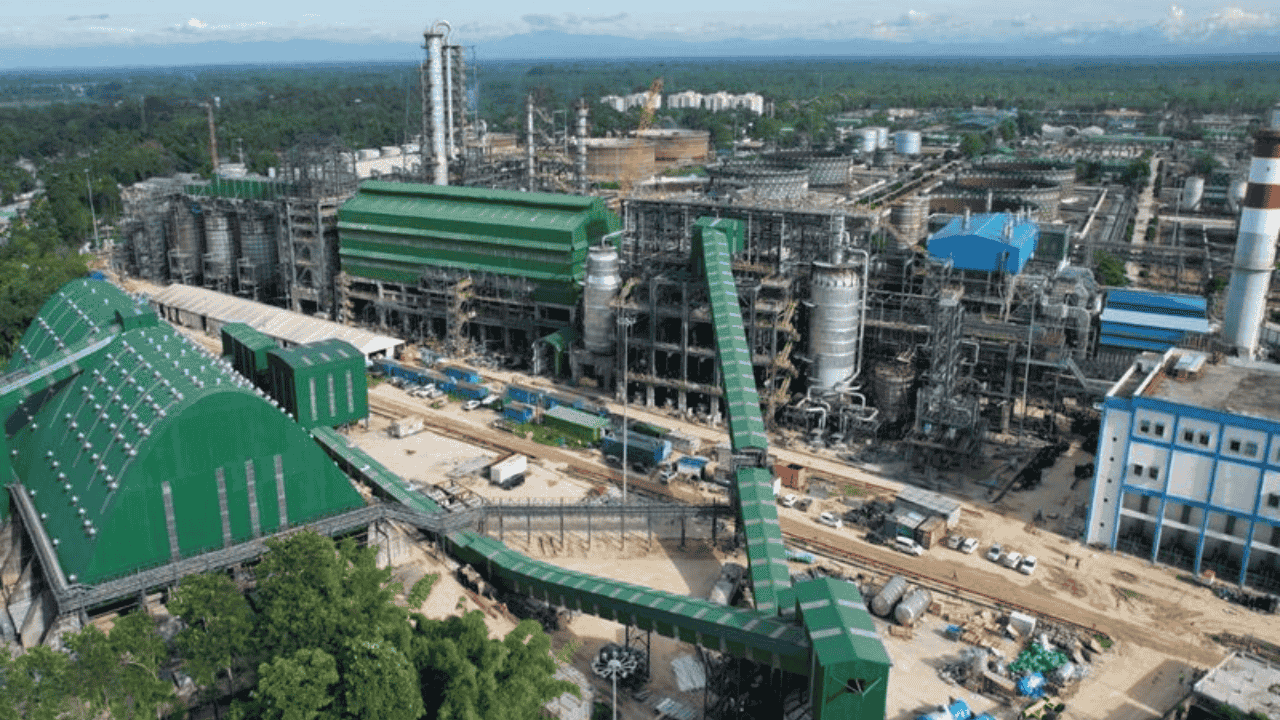Prime Minister Narendra Modi inaugurated India's first bamboo-based bioethanol plant on September 14, 2025, marking a historic milestone in the country's clean energy journey. Located in Golaghat district, Assam, this groundbreaking facility represents a significant step toward energy self-sufficiency and sustainable development.
Plant Overview and Technical Specifications
The world's first green bamboo bioethanol plant has been developed by Assam Bio Ethanol Private Limited (ABEPL), a joint venture between Numaligarh Refinery Limited (NRL) and two Finnish companies - Fortum and Chempolis. Built at an investment of ₹5,000 crores, this zero-waste facility utilizes advanced second-generation biorefining technology.
Key Production Capacity:
Annual bamboo processing: 5 lakh tonnes (500,000 tonnes)
Ethanol production: 48,900 metric tonnes per year with 99% purity
Additional products: 11,000 tonnes of acetic acid, 19,000 tonnes of furfural, and 31,000 tonnes of food-grade liquid CO₂
Power generation: 25 MW of green electricity
Bamboo Supply Chain and Farmer Benefits
The plant sources bamboo from 18 districts in Assam and additional districts in Arunachal Pradesh, Nagaland, and Meghalaya. NRL has established a comprehensive supply chain within a 300-kilometer radius, focusing on two specific bamboo varieties:
Balco (Bambusa balcooa)
Tulda (Bambusa tulda)
These species are ideal when harvested at three-and-a-half years old due to their high cellulose content, crucial for producing fuel-grade bioethanol.
Economic Impact on Farmers:
Free bamboo saplings provided to farmers (market value: ₹27 per sapling)
Current bamboo pole prices: ₹65-70 per pole
Expected rural economy boost: ₹200 crore annually for Assam
Beneficiaries: Over 30,000 tribal and rural farmers
Technology and Zero-Waste Approach
The facility employs Chempolis' advanced formico® fractionation technology, which processes bamboo through several stages:
Pre-treatment: Mechanical and chemical separation of cellulose, hemicellulose, and lignin
Hydrolysis: Enzyme breakdown of cellulose into glucose and hemicellulose into xylose
Fermentation: Specialized microorganisms convert sugars into ethanol
Distillation: Ethanol purification to fuel-grade quality
The zero-waste design ensures that lignin-rich residues are used for power generation, making the plant energy self-sufficient.
Policy Framework and Legal Changes
A crucial policy change enabled this project's success. The amendment to the Indian Forest Act, 1927 removed bamboo's classification as a tree, lifting the ban on its cutting. This change empowered forest communities and private growers to cultivate and sell bamboo legally, supporting rural livelihoods.
Alignment with National Programs
Ethanol Blending Programme (EBP)
The plant directly supports India's ambitious goal of achieving 20% ethanol blending in petrol (E20) by 2025. India has already achieved this target five years ahead of the original 2030 timeline, with ethanol production increasing from 38 crore liters in 2014 to over 660 crore liters by 2025.
Benefits of Ethanol Blending:
Reduced crude oil imports and foreign exchange savings
Lower carbon emissions - approximately 30% reduction compared to conventional petrol
Enhanced energy security and reduced fossil fuel dependency
Industrial Significance and Future Prospects
Beyond ethanol production, the plant manufactures valuable industrial chemicals:
Acetic acid: Used in pharmaceuticals and chemical industries
Furfural: Important for pharmaceutical API industry
Food-grade CO₂: Beneficial for beverage industry
The facility also laid the foundation for a ₹7,230 crore polypropylene plant at Numaligarh Refinery, further strengthening regional industrial growth.
Environmental and Social Impact
Environmental Benefits:
CO₂ emission reduction: Approximately 65,000 tonnes per annum
Renewable energy generation: 144 gigawatt hours annually
Sustainable resource utilization: Bamboo's fast regeneration (3-4 years) ensures continuous supply
Social Benefits:
Employment generation: Approximately 3,500 jobs in the value supply chain
Local entrepreneurship: Creation of 50 Local Level Entrepreneurs
Rural income diversification: New market opportunities for bamboo cultivation
Strategic Importance for Northeast India
This project aligns with India's "Act East Policy" by driving investment in Northeast India. The region's abundant bamboo cover of over 10,000 square kilometers across Arunachal Pradesh, Assam, and Meghalaya provides a sustainable feedstock source.
The initiative also received international support through a ¥60 billion loan agreement between Japan Bank for International Cooperation (JBIC) and Power Finance Corporation (PFC), highlighting the project's strategic importance in India-Japan clean energy cooperation.
Why This Matters for Your Exam Preparation
This development is highly relevant for UPSC and other competitive exams across multiple dimensions:
For Prelims:
Questions on India's ethanol blending targets and achievements
Bamboo classification changes under Forest Act amendments
Northeast India's industrial development initiatives
Clean energy and biofuel technologies
For Mains:
GS Paper II: Government policies for rural development and farmer welfare
GS Paper III: Energy security, environmental conservation, and industrial development
Current Affairs: Recent developments in India's clean energy transition
Key Topics to Focus:
National Policy on Biofuels 2018 and its amendments
Ethanol Blending Programme (EBP) timeline and targets
Second-generation biofuels and their advantages
Northeast India's economic development through resource utilization
India's Net Zero commitments and clean energy initiatives
This landmark project exemplifies India's commitment to sustainable development, energy security, and inclusive growth, making it a crucial topic for competitive exam preparation. The integration of technology, policy reforms, and community welfare demonstrates the multifaceted approach required for India's transition to a cleaner, more sustainable energy future.







